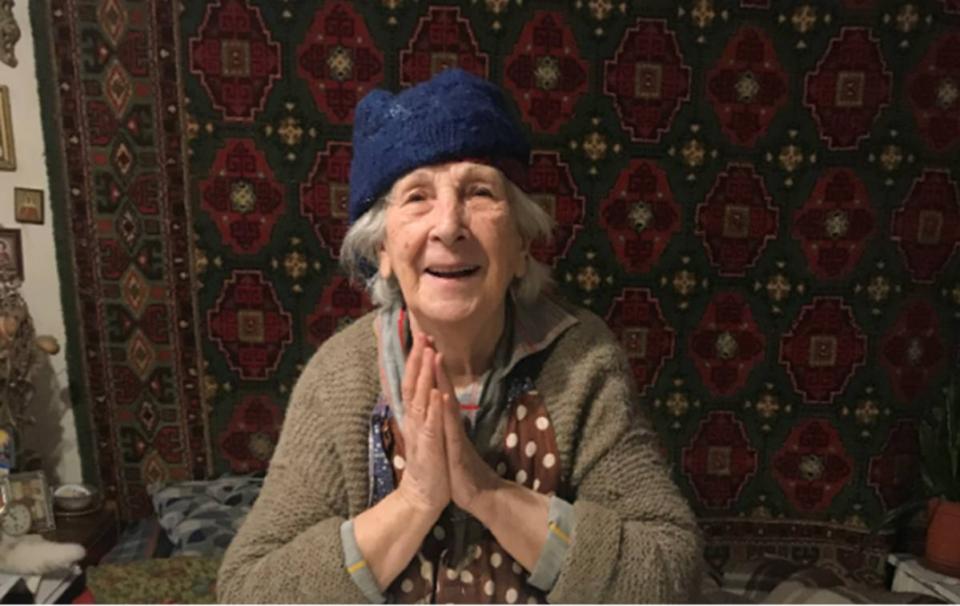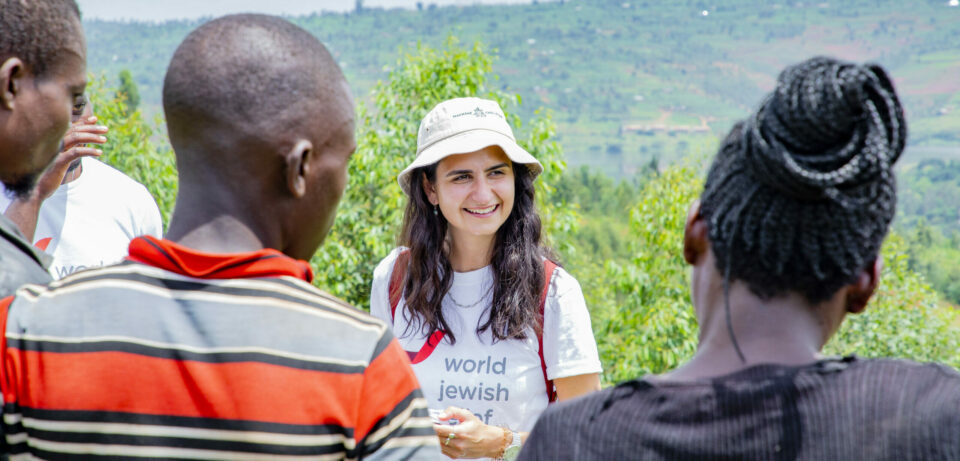Saving Lives During the Rwandan Genocide and Holocaust
By Ekaterina Mitiaev, Head of Impact and Livelihoods
At 20:26 on 06 of April 1994 the plane carrying Rwandan President Juvenal Habyarimana from peace negotiations in Arusha was shot down. It coincidentally crashed in the president’s own backyard, killing all on board.
Some of the debris from the Mystere-Falcon 50 passenger jet can still be observed at the Presidential Palace museum, a sinister place where the plans to exterminate an entire group of people were made. Immediately following the crash, the Interahamwe (local militias) set up road blocks around Kigali. And then Hutu extremists, using lists of names prepared in advance, rounded up and killed the country’s prominent political figures who had advocated for democracy. Genocide was instant. The operation which emerged was a devastating frenzy of violence, bloodshed and merciless killing.
The mass annihilation of men, women, elderly and children lasted for 100 days. Even by the most conservative estimates at least 800,000 people were killed over that period. Contrary to popular belief, this tragedy was not a case of a spontaneous outbreak of violence by ignorant, uneducated masses. “Ancient hatred” bears as little impact on genocide in Africa as it does in Europe. Genocide was the direct result of very orderly administration, authoritarianism and decades of modern ideological brainwash. This conflict was thoroughly prepared and carried out by the political elite in full view of foreign consulates and the UN.
The carnage that started the night of the crush in Kigali and was executed by the presidential guards, the army and the militias, spread to the rest of the country at varying speed. In some areas it started immediately, in others, where local government and citizens resisted, it took weeks. In those places, civil servants were quickly replaced with new, extremist ones and militias were brought from the capital. The population was encouraged to search for people in hiding, to denounce neighbours who were protecting people in their homes, to kill people at homes, at roadblocks, in the churches, schools, and government offices.
In the intense atmosphere of hatred, division, fear and suspicion all human norms were overthrown. It was no longer possible to know whom to trust. The violence in Rwanda was an intimate affair. Neighbours were killing their neighbours. Teachers were killing their students. Doctors were killing their patients.
One of the murderers, currently serving his sentence in prison, told a French reporter Jean Hatzfeld, “Killing someone is really unpleasant when you decide to do it yourself, even if it’s just an animal. But when you have to act on the instruction from the government, when you have been properly prepared for it and even encouraged on every side, when you know that everyone will take part in the killings and there would be no consequences for it, then you stop having any doubts and your conscience is clear. You simply go and kill without a second thought.” As a great Russian writer Leo Tolstoy observed, “There are no conditions of life to which a man cannot get accustomed, especially if he sees them accepted by everyone around him”.
The Rescuers
But amidst this atrocious violence, there were people who decided to shield the victims. They did this with full knowledge that it might be the last decision they made. In Rwanda these are known as ‘The Rescuers.’ One of the best known Rescuers is Zura Karuhimbi, an older woman who managed to save more than 100 people. When agitated young men with machetes surrounded her tiny house, demanding that she hand over those she was sheltering inside, she did not have any weapons to use. But Zura had a reputation as a witchdoctor and she used her knowledge of traditional healing plants and various rituals to act as if possessed by evil spirits which drove the perpetrators away. Even when offered a very substantial bribe by militias, she refused. Everyone sheltered by her survived the genocide.
Gilbert, a colleague from World Jewish Relief’s Rwandan partner organisation UNM is a son of a Rescuer. During the Genocide, his father John Tabaro saved his wife (Gilbert’s mother), her family members and several neighbours.
When honouring the Rwandan Rescuers, it is impossible not to draw parallels with Righteous Among the Nations, non-Jews who took great risks to save Jews during the Holocaust. Like Rwandan Rescuers, these exceptional individuals accepted a life ruled by constant fear of betrayal and capture. In Eastern Europe, the Nazis executed not only the people who sheltered Jews, but their entire families. As Irena Veisaite pointed out;
Unfortunately, to kill thousands of people only a few men with machine guns are needed, and they do not risk anything except their souls. Saving of just one man involved exceptional devotional, indescribable courage of many people, and they were risking not only their lives, but also those of their children.
The Belarusian town of Brest was the first to be occupied by Nazis in the USSR. Before the war, its Jewish population was about 25,000. None of them had any chance of fleeing to Siberia or Central Asia. By the end of the war, only 19 Jews survived. Six were saved by the family of Pelageya Makarenko. In Lviv out of 150,000 Jews at the onset of WWII, about 800 survived. Six children including Lili Polman who arrived in the UK in 1946, were saved by Olena Witer, also known as Abbess Iosefa. In 1945 she was arrested by Soviet authorities and spent 10 years in a Gulag. On February 19, 1976, Yad Vashem recognised Olena Witer as the first Ukrainian Righteous Among the Nations. She insisted that Ukraine and not USSR should be stated as her nation.
With financial assistance from World Jewish Relief, our long-term Kiev-based partner 2U has supported Olga Savenko (Kobets), the daughter of a Righteous Among Nations, Yekaterina. In 1942, Olga was eight. It was her responsibility to accompany Jewish boy Ilya whose parents had perished in the Babiy Yar massacre. They hid together during regular police round-ups. Owing to the exceptional bravery of Olga’s family, Ilya survived the Nazi occupation.
Rescuers resisted intense propaganda and their own instinct for self-preservation. Perpetrators and collaborators in the occupied territories of the USSR did not risk anything but immediately obtained various bonuses by partaking in atrocities. But Rescuers took an unimaginable risk without any hope for recognition or reward. Most heroic acts glorified by society have a foreseen conclusion. When Holocaust and Rwandan Genocide Rescuers’ rescue operations began, they did not know how long they would last or whether they and their families would survive to see its completion.
According to the sociologist Zygmunt Bauman;
In those rare cases when individuals found the strength and courage to resist – their moral conscience was truly their own personal attribute and possession – unlike immorality, which had to be socially produced.
Each act taken by a rescuer was unique. It is impossible to predict who will risk their lives to assist total strangers, or even their friends and family. No single personality type is apparent. No conventional way of categorising people, for example by social class, education, degree of religious commitment or political affiliation could predict whether individuals would become rescuers.
However, social scientists including Nechama Tec, Eva Fogelman and Samuel Oliner identified certain features relating to family background, values and personality features that increase one’s likelihood of preserving human values in the midst of total moral collapse. Despite the external differences, there are commonalities in rescuers’ upbringings. Most of them were taught to appreciate people who were considered different from themselves. The altruism of rescuers’ parents set an example for their future rescue operations. Moreover, rescuers had a strong sense of individuality or separateness and were motivated by moral values that did not depend on the support or approval of other people. They had been taught independence and self-reliance that helped them stand up to extremist authorities and resist racist norms.
According to the research paper “Hutus Aiding Tutsis during the Rwandan Genocide: Motives, Meanings and Morals
Most rescuers repeatedly stated that their decision to rescue was directly connected to their sense of self and of interconnectedness with the victims. The majority of rescuers interviewed stated that;
their attempts to save Tutsis were driven in part by what they learned as children through ethical instruction, moralistic stories, and inspiring actions of role models.
John Tabaro said that he was heavily influenced by his father who helped him think independently and taught him values of tolerance, justice and equality. John married a Tutsi woman in 1988, a year when Juvenal Habyarimana who seized the power in the military coup 15 years earlier was re-elected with 99.98% of the vote.
John’s family fully embraced his choice. Only two years later, when our colleague Gilbert was one year old, a political movement Hutu Power proclaimed its founding principles in the “Hutu Ten Commandments”.
The first one stated that;
Every Hutu should know that a Tutsi woman, whoever she is, works for the interest of her Tutsi ethnic group. As a result, we shall consider a traitor any Hutu who marries a Tutsi woman.
Under immense pressure, John courageously stood up for his moral principles. During 100 days of unimaginable slaughter and total lawlessness, he managed to maintain his believe in the power of law. He never doubted that the day of atonement for the merciless perpetrators would come.
In 1942 little Olya Kobets in Kiev’s suburb of Svyatoshon did not volunteer to save her peer Ilya – her help was enlisted by her grandmother and mother. Initially, she considered it a game. She was interested in playing hide and seek with her friend. But when the family was paid a visit from local police, she saw her mother’s eyes and grasped the seriousness of the situation. Quite quickly she realised how special what her family did was. Olga is very proud of her mother and grandmother. But even 78 years later unexpected knocks in the door still startle her. Olga also does not like holiday fireworks. They remind her of wartime firing artillery.
Zygmunt Bauman captured two very important lessons of the Holocaust. According to him,
In a system where rationality and ethics point in opposite directions, humanity is the main loser. Evil can do its dirty work, hoping that most people most of the time will refrain from doing rash, reckless things – and resisting evil is rash and reckless. Evil needs neither enthusiastic followers nor an applauding audience – the instinct of self-preservation will do, encouraged by the comforting thought that it is not my turn yet, thank God: by lying low, I can still escape.
While this first lesson gives us warning, the second one offers hope. And it is given to us by the Rescuers, that;
putting self-preservation above moral duty is in no way predetermined, inevitable and inescapable. It does not matter how many people chose moral duty over the rationality of self-preservation – what does matter that some did. Evil is not all powerful. It can be resisted.





